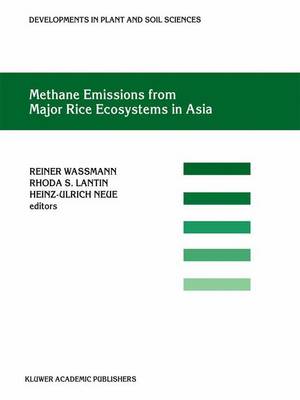Developments in Plant and Soil Sciences
1 primary work
Book 91
Methane Emissions from Major Rice Ecosystems in Asia
Published 31 March 2001
Rice production is affected by changing climate conditions and has the dual role of contributing to global warming through emissions of the greenhouse gas methane. Climate change has been recognized as a major threat to the global environment. Because of insufficient field data, rice-growing countries face a problem when trying to comply with the United Nations Framework Convention on Climate Change stipulations to compile a national inventory of emissions and to explore mitigation options.
Given the expected doubling in rice production in Asia, the need to evaluate the interaction between climate change and rice production is critical to forming a sound basis for future directions of technology developments by policy makers, agriculturists, environmentalists, rice producers, and rice consumers.
The present book comprises two sections. The first part documents a comprehensive overview of the results achieved from an interregional research effort to quantify methane emission from major rice ecosystems and to identify efficient mitigation options. This research report broadens understanding of the contribution of rice cultivation to methane emissions and clarifies that emissions are relatively low, except in specific rice ecosystems, and that these high emissions could be ameliorated without sacrificing yield.
The second section shows results from other projects that investigated the role of rice cultivators in field and laboratory approaches. The findings represent inputs for future modeling approaches in the role of rice cultivators. The expanded database generated by other projects is reflected in modeling efforts.
Given the expected doubling in rice production in Asia, the need to evaluate the interaction between climate change and rice production is critical to forming a sound basis for future directions of technology developments by policy makers, agriculturists, environmentalists, rice producers, and rice consumers.
The present book comprises two sections. The first part documents a comprehensive overview of the results achieved from an interregional research effort to quantify methane emission from major rice ecosystems and to identify efficient mitigation options. This research report broadens understanding of the contribution of rice cultivation to methane emissions and clarifies that emissions are relatively low, except in specific rice ecosystems, and that these high emissions could be ameliorated without sacrificing yield.
The second section shows results from other projects that investigated the role of rice cultivators in field and laboratory approaches. The findings represent inputs for future modeling approaches in the role of rice cultivators. The expanded database generated by other projects is reflected in modeling efforts.
